By Tom Wintaugh | December 11, 2023

See why top ecommerce brands use Miva’s no-code platform to run
multiple stores, manage massive catalogs, and grow their revenue.
As the year concludes, it’s a good time for merchants to evaluate how well ecommerce growth strategies which were ignited at the start of the year have performed. There are many ways to measure business growth, from the number of products to the number of customers, and every process that happens in between. Here are some essential questions to help measure growth progress, coupled with actionable advice, to ensure your business is well-positioned for the coming year.
Revenue is one of the most tangible metrics to assess growth. Evaluate whether you met or exceeded your financial goals and if not, start by considering if your ecommerce business is capable of achieving better results. Which aspects of your business, such as your website, your product catalog, or your customer management, immediately stand to improve the most?
Leveraging ecommerce features to open a new sales channel is a proactive way to spur revenue growth. Read more about how B2B sellers can leverage different channels, including DTC, here.
Emphasizing customer retention can act as an antidote to high CAC. Assess the growth in repeat customers and the effectiveness of any retention strategies you might have.
Merchants can strengthen relationships and build more long term business through increasingly personalized shopping experiences and loyalty programs. We wrote more about how successful stores use loyalty programs to retain customers here.
High CAC can be deeply inhibiting for business growth. If your CAC costs continue to rise, you may need to consider if the segments and venues you are choosing to market to are as effective as in the past.
If CAC costs are unsustainably high, you may need to shift the focus towards adapting your offerings, including products, marketing content, and site UI, to better suit the audiences you seek. Read more about how to lower CAC here.
Conversion rates are a great snapshot of how effective your shopping experience is. Lower conversions rate can indicate that the user experience is confusing, poorly personalized, or slow.
Conversion rates can be increased with a variety of website optimizations which we identify here. Every aspect of the online shopping experience can be a conversion driver, from product discovery searches through checkout and fulfillment.
Assess whether customers have been spending more per transaction. If there’s stagnation, explore specific strategies to increase AOV.
Upselling and cross-selling are classic methods to increase order value for a reason. Learn how and when to make product suggestions in this multi-part guide to upselling.
CLTV is an excellent measure of how the strength of the customer base develops over time. A growing CLTV indicates satisfied and loyal customers. If CLTV has decreased, it’s a good time to reassess your customer engagement and value proposition.
Give your existing customers more reasons to buy by optimizing your site for more conversions. We prepared a complete guide to site optimization which you can download here.
Listen closely to feedback received from customers. Do you see any common themes about the quality of service or products? Have customer concerns been systematically addressed with improvements been implemented based on their suggestions?
Maintain open communication channels with customers, encourage feedback explicitly, and address any negative reviews quickly and constructively. Read about how to shape customer service programs here.
Ecommerce encompasses countless industries and is influenced by many macroeconomic conditions. Techniques, opportunities, and challenges change constantly. Did your business adapt and innovate in response to industry trends and changes?
Agility is a key element of successful ecommerce operations. Rigid processes or technology which cannot be customized to changing conditions are the enemies of sustainable success.
Assess your inventory management—were you able to balance demand and supply efficiently, avoiding stockouts and overstock situations? Robust inventory management techniques can help inventory-related systems communicate with one another and help you forecast demand accurately.
Reflecting on these questions will give you an overview of how well your ecommerce growth strategy performed this year. No matter how you fared, every one of these growth success factors can be leveraged for greater results. External conditions will always be on the move—successful stores remain committed to evolving their websites and sales strategies to always meet the moment.

Katy Ellquist, Miva’s Digital Marketing Strategist, is an accomplished writer, marketer, and social media analyst who has created sophisticated content campaigns for a broad range of professional clients. She brings to Miva a complex understanding of ecommerce trends and techniques, building upon extensive digital agency experience and a prior role as direct liaison to Miva’s top accounts. Katy is a regular contributor to the Miva blog, covering essential ecommerce topics like design & development strategy, site optimization, and omnichannel selling, with the goal of increasing the actionable knowledgebase of the entire Miva community.
Love it? Share it!
No worries, download the PDF version now and enjoy your reading later...
Download PDF